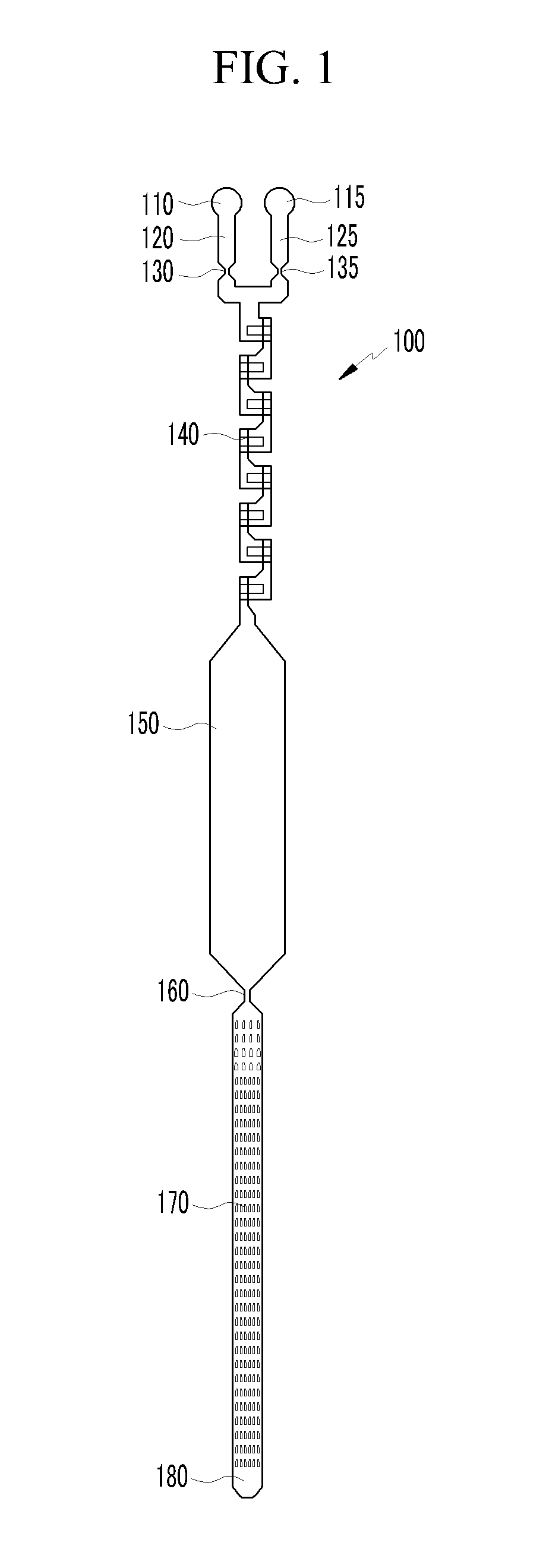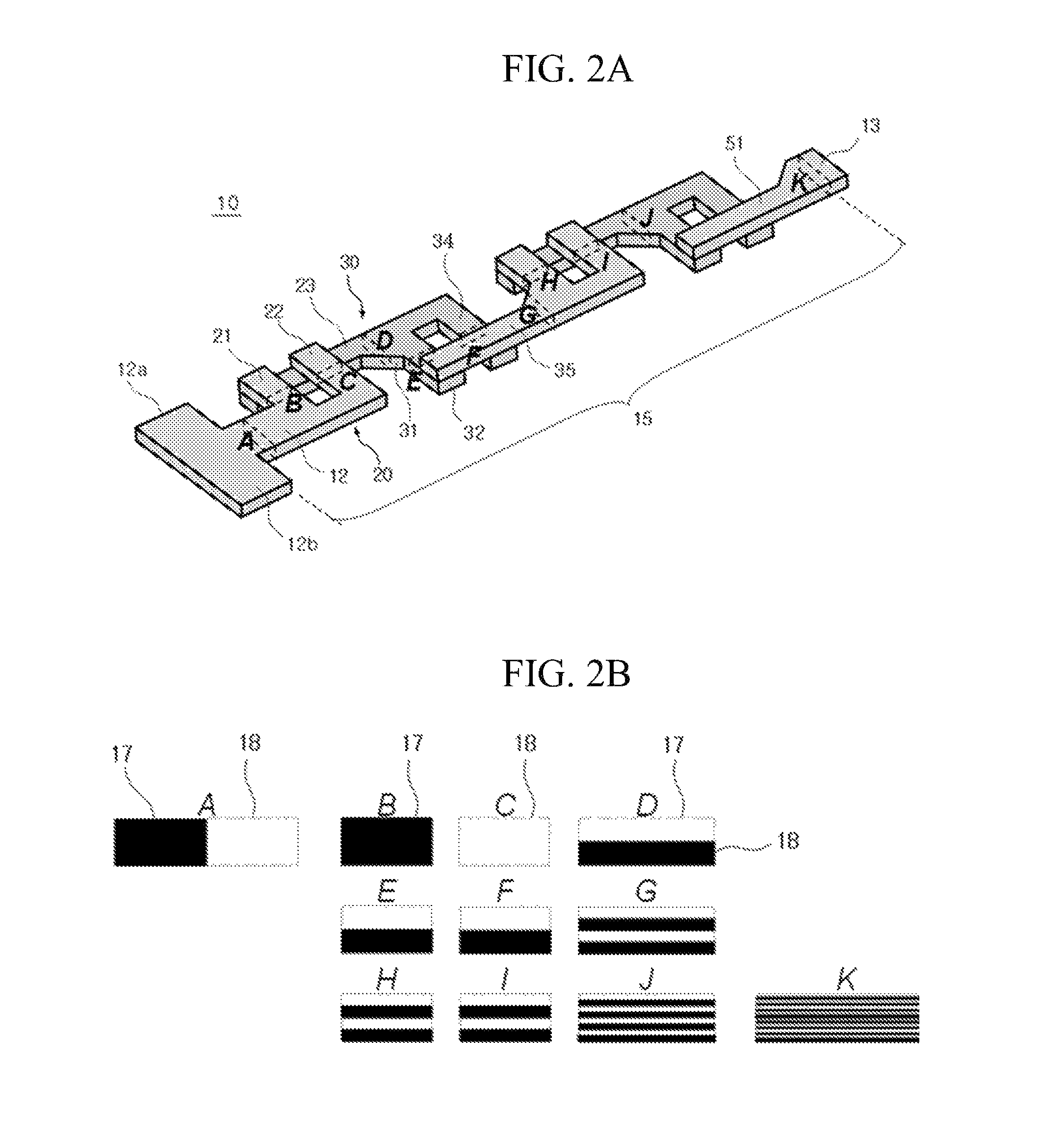Microfluidic biochip for blood typing based on agglutination reaction
- Summary
- Abstract
- Description
- Claims
- Application Information
AI Technical Summary
Benefits of technology
Problems solved by technology
Method used
Image
Examples
first embodiment
[0064]The following will describe the basic concept involved in the structure and mixture of the micromixer of the microfluidic biochip for blood typing of the first exemplary embodiment with reference to FIGS. 2A and 2B. FIG. 2A is a perspective view for describing a concept of the micromixer of the microfluidic biochip for blood typing according to the present invention, and FIG. 2B is a schematic view illustrating a sectional mixture movement occurring at a location indicated in FIG. 2A.
[0065]The micromixer 10 according to the present exemplary embodiment includes a pair of inlets 12a and 12b through which two different fluids (i.e., the specimen and the reagent) are introduced, an inflow channel 12 through which the specimen and the reagent join each other and pass, an outflow channel 13 through which the specimen and the reagent are mixed and discharged, and a mixing portion 15 that is formed and connected between the inflow channel 12 and the outflow channel 13 to mix the spec...
second embodiment
[0111]Referring to FIG. 7, the actual microfluidic biochip 500 has two basic units of the second embodiment shown in FIG. 3. That is, the actual microfluidic biochip 500 is configured to simultaneously perform the red cell typing and the serum typing for one blood sample (one blood typing).
[0112]The microfluidic biochip for blood typing, which is shown in FIG. 7, includes a specimen inlet 510, reagent inlets 515, a fluid flow split microchannel 520 that splits the specimen to simultaneously perform a variety of different blood typing, microchannels 525 for transferring the reagent, first passive microvalves 530 for controlling flows of the specimen and the reagent, serpentine lamination chaos micromixers 540 for effectively mixing the specimen with the reagent, reaction microchambers 550 for inducing a reaction by storing the mixture of the specimen and the reagent, second passive microvalves 560 for allowing the mixture of the specimen and the reagent to stay in the reaction microc...
PUM
 Login to View More
Login to View More Abstract
Description
Claims
Application Information
 Login to View More
Login to View More - R&D
- Intellectual Property
- Life Sciences
- Materials
- Tech Scout
- Unparalleled Data Quality
- Higher Quality Content
- 60% Fewer Hallucinations
Browse by: Latest US Patents, China's latest patents, Technical Efficacy Thesaurus, Application Domain, Technology Topic, Popular Technical Reports.
© 2025 PatSnap. All rights reserved.Legal|Privacy policy|Modern Slavery Act Transparency Statement|Sitemap|About US| Contact US: help@patsnap.com



